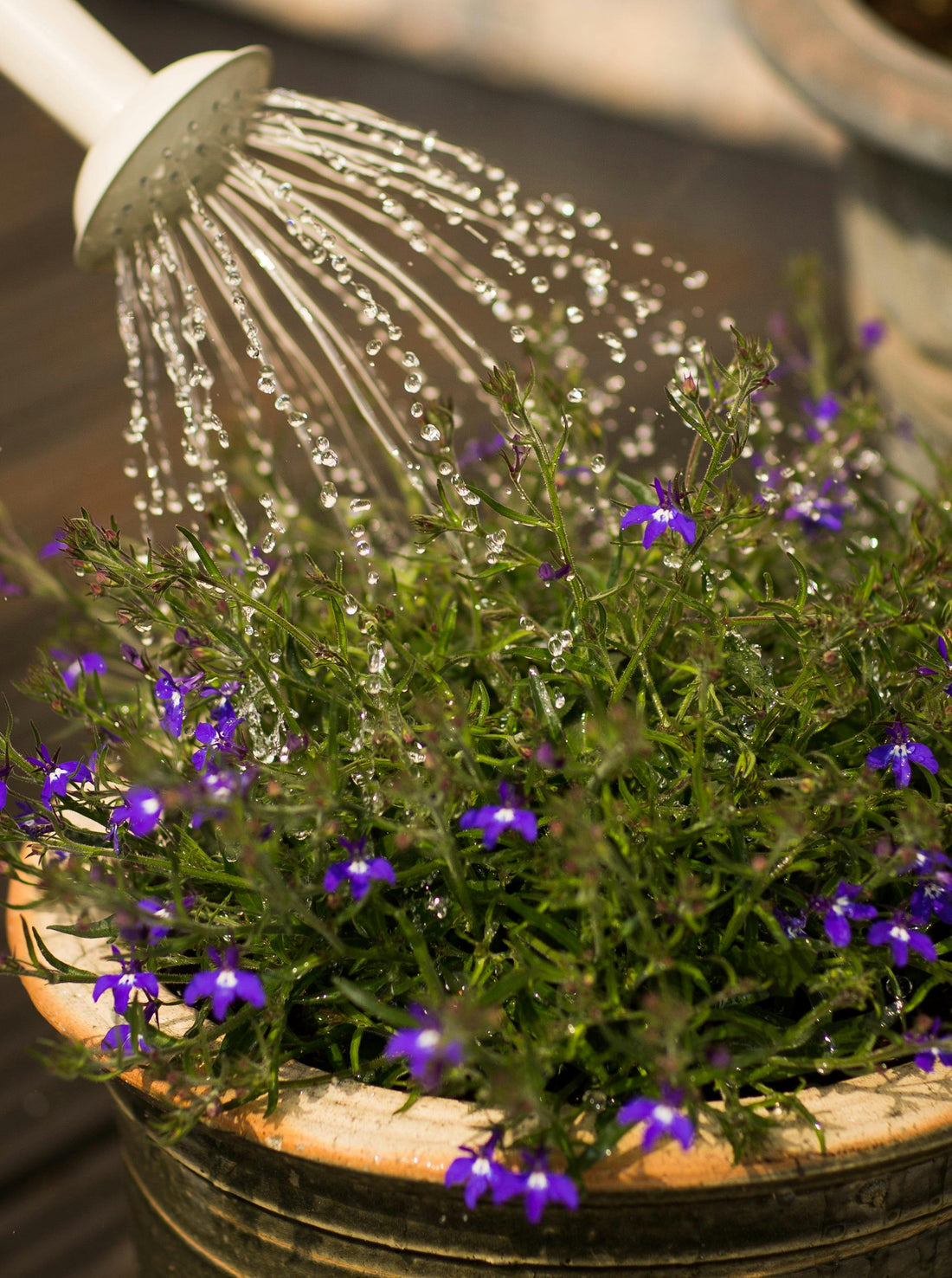
Ultimate Guide to Watering Indoor Plants
Share
Watering indoor plants is essential for their health and growth, but it's important to strike the right balance, as overwatering or underwatering can harm them. Here are some tips for watering indoor plants effectively:
1. Know Your Plant’s Watering Needs
-
Different plants have different watering requirements. Some need more frequent watering, while others prefer to dry out between waterings. For example, succulents and cacti need minimal water, while tropical plants like ferns need more frequent hydration.
2. Check the Soil Moisture
-
Before watering, check the moisture level in the soil. Stick your finger about an inch deep into the soil. If it feels dry, it’s time to water. If it still feels moist, wait a few more days before watering again.
3. Watering Technique
-
Water thoroughly until it drains out from the bottom of the pot. This ensures that the entire root system gets hydrated. Make sure the pot has drainage holes to avoid waterlogging.
-
Avoid letting your plants sit in standing water, as this can cause root rot.
4. Watering Frequency
-
Most indoor plants should be watered when the top 1-2 inches of soil are dry. However, the frequency can vary based on the plant species, the size of the pot, and the environmental conditions (light, temperature, humidity).
5. Consider the Environment
-
Temperature, humidity, and light exposure affect how quickly the soil dries out. For example, plants in a dry, sunny spot may need watering more frequently, while those in low-light areas may require less.
6. Use the Right Water
-
Tap water is often fine, but it can contain salts, chlorine, or other chemicals that may build up over time and affect plant health. If possible, let tap water sit out overnight to allow chemicals to dissipate or use filtered water.
7. Signs of Overwatering or Underwatering
-
Overwatering: Yellowing leaves, soggy soil, mold growth, or a musty smell around the roots.
-
Underwatering: Wilting, crispy edges, or dry, brittle leaves.
8. Adjust for Seasonal Changes
-
During winter, many plants go into a dormant period and need less water. In the warmer months, plants may need more frequent watering as they grow actively.
By understanding your specific plant’s needs and maintaining a consistent watering routine, your indoor plants should thrive!
